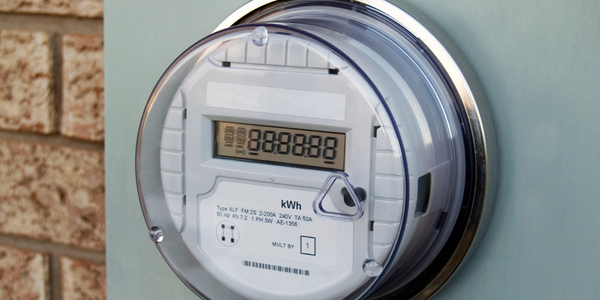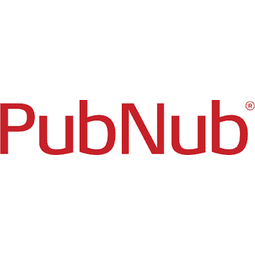Technology Category
- Analytics & Modeling - Real Time Analytics
- Platform as a Service (PaaS) - Application Development Platforms
Applicable Industries
- Electrical Grids
- Healthcare & Hospitals
Applicable Functions
- Product Research & Development
- Quality Assurance
Use Cases
- Real-Time Location System (RTLS)
- Time Sensitive Networking
Services
- System Integration
- Testing & Certification
About The Customer
VitusVet is a client-engagement platform that connects pet owners with their care providers to improve the health and safety of pets. Founded in 2013 by a practicing veterinarian, VitusVet was originally built as an app to allow pet owners to carry their pets' medical records with them on their phones. The platform has evolved to provide a modern way for veterinary practices to manage their daily operations and strengthen customer communication. It offers features like appointment and prescription refill reminders, two-way texting, real-time updates while pets are receiving care, and check-in notifications.
The Challenge
VitusVet, a client-engagement platform for veterinary practices, was facing the challenge of building real-time notifications at scale for their Connect app. The app was designed to facilitate communication between vets and pet owners, but the development of an in-house system for real-time notifications would require substantial resources and time. The company needed a solution that would allow them to quickly and efficiently manage their day-to-day operations, improve customer communication, and ensure that pets receive the highest-quality care. The challenge was to find a way to enable reliable, real-time communication between veterinary practices and pet owners without having to build from the ground up, which would be costly and time-consuming.
The Solution
VitusVet turned to PubNub to power their app’s real-time updates and notifications to pet owners. The integration of the PubNub SDK into their applications allowed VitusVet to serve up a highly valuable and needed feature for their customers, reducing their development time by three months. With PubNub, VitusVet was able to provide real-time visibility for pet owners into their pets' care, improve efficiency for veterinary practices through in-app updates and notifications, and power real-time updates at scale for hundreds of veterinary practices. The solution also enabled veterinary practices to streamline their day-to-day operations by enabling customers to use curbside check-in. Through the app’s real-time features, veterinary staff were notified once customers had arrived for their appointment using check-in and drop-off notifications.
Operational Impact
Quantitative Benefit

Case Study missing?
Start adding your own!
Register with your work email and create a new case study profile for your business.
Related Case Studies.

Case Study
Hospital Inventory Management
The hospital supply chain team is responsible for ensuring that the right medical supplies are readily available to clinicians when and where needed, and to do so in the most efficient manner possible. However, many of the systems and processes in use at the cancer center for supply chain management were not best suited to support these goals. Barcoding technology, a commonly used method for inventory management of medical supplies, is labor intensive, time consuming, does not provide real-time visibility into inventory levels and can be prone to error. Consequently, the lack of accurate and real-time visibility into inventory levels across multiple supply rooms in multiple hospital facilities creates additional inefficiency in the system causing over-ordering, hoarding, and wasted supplies. Other sources of waste and cost were also identified as candidates for improvement. Existing systems and processes did not provide adequate security for high-cost inventory within the hospital, which was another driver of cost. A lack of visibility into expiration dates for supplies resulted in supplies being wasted due to past expiry dates. Storage of supplies was also a key consideration given the location of the cancer center’s facilities in a dense urban setting, where space is always at a premium. In order to address the challenges outlined above, the hospital sought a solution that would provide real-time inventory information with high levels of accuracy, reduce the level of manual effort required and enable data driven decision making to ensure that the right supplies were readily available to clinicians in the right location at the right time.

Case Study
Gas Pipeline Monitoring System for Hospitals
This system integrator focuses on providing centralized gas pipeline monitoring systems for hospitals. The service they provide makes it possible for hospitals to reduce both maintenance and labor costs. Since hospitals may not have an existing network suitable for this type of system, GPRS communication provides an easy and ready-to-use solution for remote, distributed monitoring systems System Requirements - GPRS communication - Seamless connection with SCADA software - Simple, front-end control capability - Expandable I/O channels - Combine AI, DI, and DO channels

Case Study
Hydro One Leads the Way In Smart Meter Development
In 2010, Ontario’s energy board mandated that time-of-use (TOU) pricing for consumers be available for all consumers on a regulated price plan. To meet this requirement, Hydro One needed to quickly deploy a smart meter and intelligent communications network solution to meet the provincial government’s requirement at a low cost. The network needed to cover Hydro One’s expansive service territory, which has a land mass twice the size of Texas, and its customers live in a mix of urban, rural, and remote areas, some places only accessible by air, rail, boat or snowmobile. Most importantly, the network needed to enable future enterprise-wide business efficiencies, modernization of distribution infrastructure and enhanced customer service. To meet these needs, Hydro One conceptualized an end-to-end solution leveraging open standards and Internet Protocols (IP) at all communication levels. The utility drew upon industry leaders like Trilliant to realize this vision.

Case Study
Driving Digital Transformations for Vitro Diagnostic Medical Devices
Diagnostic devices play a vital role in helping to improve healthcare delivery. In fact, an estimated 60 percent of the world’s medical decisions are made with support from in vitrodiagnostics (IVD) solutions, such as those provided by Roche Diagnostics, an industry leader. As the demand for medical diagnostic services grows rapidly in hospitals and clinics across China, so does the market for IVD solutions. In addition, the typically high cost of these diagnostic devices means that comprehensive post-sales services are needed. Wanteed to improve three portions of thr IVD:1. Remotely monitor and manage IVD devices as fixed assets.2. Optimizing device availability with predictive maintenance.3. Recommending the best IVD solution for a customer’s needs.

Case Study
HaemoCloud Global Blood Management System
1) Deliver a connected digital product system to protect and increase the differentiated value of Haemonetics blood and plasma solutions. 2) Improve patient outcomes by increasing the efficiency of blood supply flows. 3) Navigate and satisfy a complex web of global regulatory compliance requirements. 4) Reduce costly and labor-intensive maintenance procedures.








